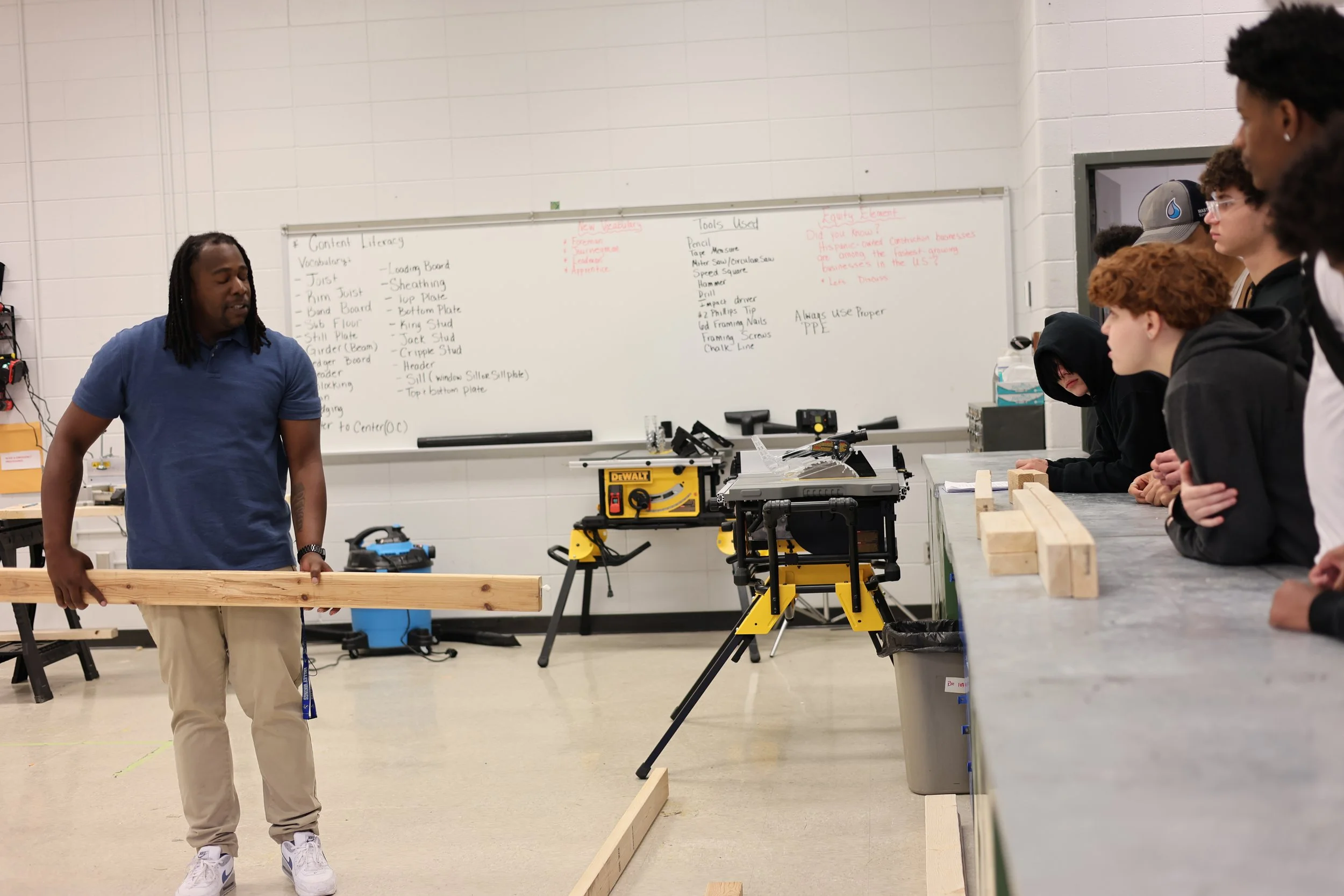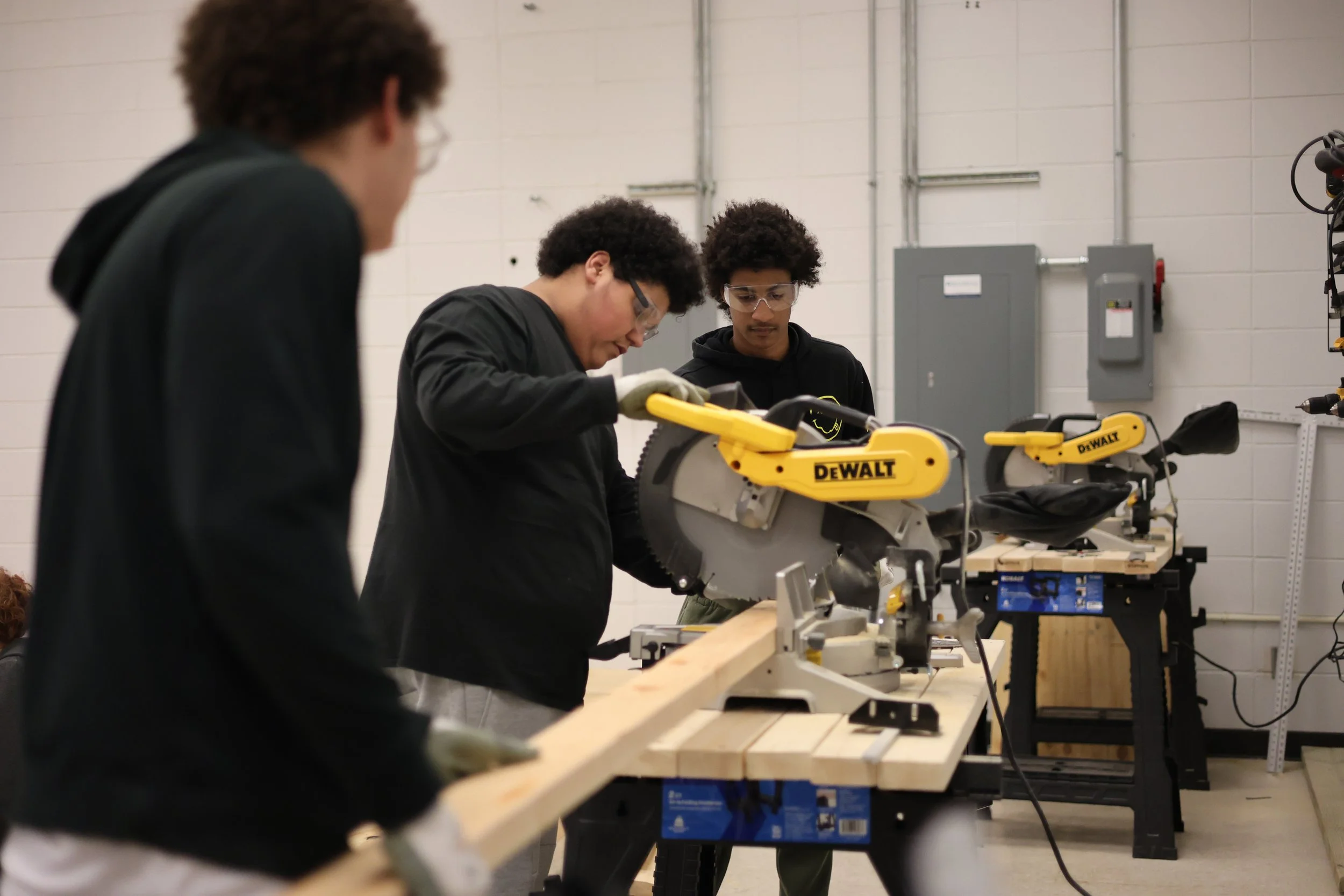Framing the Future: How Valley High’s BAM Pathway Lays the Foundation for Lucrative Careers
In an era where the demand for skilled trades professionals continues to rise, Valley High School is building a solution. The school's innovative Building and Maintenance (BAM) Pathway offers a launchpad for students to acquire essential, hands-on skills that promise stable, debt-free careers.
"Working with your hands has become a lost art," observes Kevin Dennis (KD), the passionate instructor leading the BAM Pathway. "It's really important to me to ensure that these students—the boys and the girls—have the ability to find employment." This fundamental belief underscores a program designed to meet students where their aspirations lie.
"I chose this pathway because of what I want to do in the future," shares student CJ. "I want to build, and I like doing that type of stuff." This drive to create, to construct, is exactly what the BAM Pathway nurtures.
Why BAM Was Built
The inception of the BAM Pathway wasn't accidental; it was a strategic response to a clear need. Principal Jennie Currin explains the meticulous process: "We surveyed students, we surveyed families, and we worked with the district to see where there was a hole—where there was something unique that we could bring to the program." What they found was a demand for comprehensive trades training, a gap the BAM Pathway was designed to fill.
Beau Johnston, Director of CTE for JCPS, champions the pathway's multi-disciplinary approach. "The creation of the BAM — Building and Maintenance — pathway is an exciting opportunity to give students a more well-rounded introduction to the trades," Johnston states. "Instead of specializing in just one area, students will gain hands-on experience across multiple disciplines, building the versatility and problem-solving skills our industry partners tell us they value most. This pathway reflects a true collaboration between education and industry — preparing students not just for a job, but for a lifelong career in the skilled trades."
“Working with your hands has become a lost art. It’s really important to me to ensure that these students...have the ability to find employment.”
Instructor KD's Journey
The program's strength is undeniably rooted in its instructor, KD, whose own journey is a testament to the power of the skilled trades. KD's career began after his military service, starting as a painter in 2007. "Luckily, a position in renovations opened up, and I was able to accept that position and learn all the trades from the renovation shop at JCPS: masonry, electrical, carpentry, plumbing, and painting," he recounts. His five years in renovations were followed by five years as the maintenance man at Duval Educational Center, and another five years at Valley.
When Principal Currin approached him about teaching, KD initially hesitated. "I thought about it and came to the understanding that it was a way to give back to the students, to pass on my knowledge, and to help create a legacy," he shares. Principal Currin recognized his unique qualifications: "I needed somebody who knows the work, who knows our students, who is passionate about what they do, and who can really connect the students to the content. And he was that person." KD's deep experience and genuine passion make him the ideal guide for the next generation of tradespeople.
Inside the BAM Lab
Inside KD's classroom, learning is dynamic and tangible. Students are actively building a "Scenario Hut"—a simulated house where they can tackle everything from drywall repair to laying different types of floors. "The sky's the limit on the amount of things that we will be able to do because we're building our simulation lab right now," KD explains.
The students appreciate this hands-on approach. Latarius notes, "A lot of the stuff that we learned, I feel like you could use not just professionally, but at home. If you need to build something or cut something, you have experience and you know what to do." Jackson echoes this sentiment: "KD has taught me some really cool things, such as how to use saws—like hand saws and circular saws—and how to hammer and measure properly. KD does know his stuff."
The curriculum is broad, mirroring KD's own diverse background. "In Building and Maintenance, we touch on everything," he confirms. "We cover electrical—running plugs, wire switches—we build masonry walls, I teach them how to set toilets and run plumbing, and then, obviously, the carpentry as well."
Students Build Their Future
The BAM Pathway is already shaping ambitious futures. Latarius, who came to Valley unsure of his path, now has a clear direction: "But now I'm leading towards either being an HVAC apprentice and moving up, or being an electrician." Jackson shares a similar entrepreneurial spirit: "After high school, I want to be in construction. I'd like to eventually have my own business focused on remodeling and building a lot of other things, like houses."
And CJ, who likes to build, sees a direct line from the classroom to her career goals: "Coming into high school, I didn't know what I wanted to do, but now I know that I want to go into construction and eventually have my own construction business and hopefully make a lot of money."
KD underscores the pathway's significant economic advantage: "That's one of the main benefits of this pathway: You can have a very lucrative career without going to college and without going into debt for college." Through this program, Valley High is also working to shorten apprenticeship durations, helping students enter the workforce and earn more, faster.
As students gain invaluable skills and chart their professional futures, KD reflects on his unexpected role. "I didn't see teaching in my future... but now, I'm grateful to be able to be a part of their lives and to help mold them into the men and women they will be in the future."


